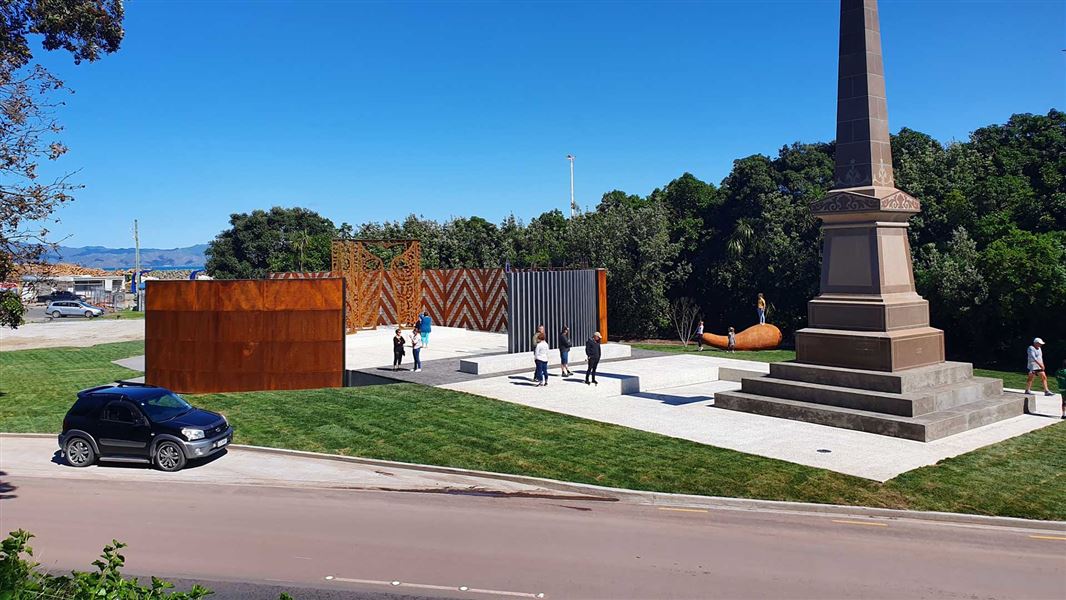Puhi Kai Iti, on the eastern shore of Tūranganui-a Kīwa/Poverty Bay, represents the moment that changed the course of New Zealand history forever. The stories of Polynesian navigation and Cook’s arrival are told through sculpture, monument, and interpretation panels.
The site’s granite obelisk was unveiled in 1906, the first monument to a European explorer in the country. In 2019 the Ikaroa sculpture was added, a commemoration of the navigator Māia and Puhi-Kai-Iti, his house of learning the reserve sits on.
Behind this are nine pou/poles, erected in remembrance of the Māori killed during Cook’s encounter. Nearby are three oversized hue/gourds acknowledging the contribution of Māia to New Zealand agriculture.
The walls surrounding Ikaroa are 112 steel tukutuku panels, hand woven by Ngāti Oneone and Tairāwhiti volunteers. The designs incorporate patterns specific to Te Poho o Rāwiri Marae as well as the Waita navigational star and are lit from within at night.
Getting there
Puhi Kai Iti is located off the Pacific Coast Highway in Tairāwhiti/Gisborne. Turn off the highway onto Hirini St, continuing straight on to Rakaiatane Rd which becomes Kaiti Beach Rd, for 900 m. The memorial is clearly visible off the road, with a small carpark available to pull into.
Two voyages
The Horouta and Te Ikaroa-a-Raurau waka, captained by Kīwa and Māia, landed in Tairāwhiti in the 1200–1300s. Kīwa settled in Tūranganui-a Kīwa/Poverty Bay, while Māia built Puhi Kai Iti at Kaiti Beach. In 1768, James Cook set sail from England to observe the transit of Venus in Tahiti and find ‘Terra Australis’, a hypothetical southern continent that geographers believed balanced the large continents of the northern hemisphere.
Ill-fated contact
On 7 October 1769, Nicholas Young sighted New Zealand from the Endeavour’s masthead, and two days later they landed at Tairāwhiti. Cook was eager to make friendly contact with local Māori. However, a series of unfortunate encounters, both on the day of the landing and the next, resulted in the deaths of nine Māori. This included the Ngāti Oneone ancestor Te Maro, who is remembered through a monument at Ruatanuika lookout on Titirangi/Kaiti Hill.
Sailing south
The following day Cook took his leave and the Endeavour headed south. Initially, Cook had planned to call the bay he landed in Endeavour Bay, but instead, he renamed Tūranganui-a-Kīwa to Poverty Bay “because it afforded us no one thing we wanted”.
